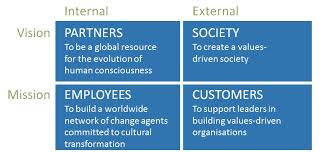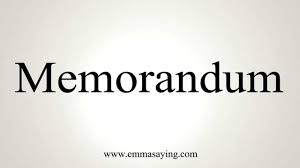
How mission,vision,values and culture of the organisational influence employee relations
Order Instructions:
• Describe how the mission, vision, values, and culture of the organization influence employee relations (the organization that I have used has been Houston Methodist – website https://www.houstonmethodist.org).
• Analyze human resources practices that promote positive employee relations and legal compliance.
• Describe how you will apply the human resources practices you selected.
• Describe how these practices will promote human resources as a strategic employee relations partner versus the enforcer.
• Include a reference page, and format your references using APA (6th edition) guidelines.
• The paper should be 6 pages long.
SAMPLE ANSWER
Employee Relations
The mission, vision, values and organizational culture of any organization have three critical roles. These roles are communicating the organization’s purpose to all the stakeholders, informing the developmental strategy for the organization, the development of measurable goals and objectives for ensuring the success of the organization’s strategy, and promoting positive interactions and conduct of the organization’s employees within and outside the organization (Tyson, 2012). These, therefore, influence the way employees and other stakeholders interact for the success of the organization.
Houston Methodist is a faith based Christian institution and, therefore, its mission; vision, values, and organization’s culture are based on Christian values. Therefore, employees interact with each other in a humane manner and treat each other with integrity, compassion, and respect as per the organization’s values. The employees perceive each other as equals and treat each other as having a sacred worth and value as they are all created by God.
Practices Promoting Positive Employee Relations and Legal Compliance
For any organization, Human Resource is among the most vital assets and a source for achieving competitive advantage. Management of human resources is challenging in comparison to the management of technology or capital. Therefore, effective management of any organization requires and effective Human Resource Management (HRM) system (Tiwari & Saxena, 2012). A good HRM system should have sound HRM practices. These are the organizational activities that are directed towards the management of the pool of human resources and ensuring such resources are employed to fulfill the goals of the organization (Tiwari & Saxena, 2012).
Researchers on HRM best practices have identified different practices using different names. These are for example, “best practice”, “high-performance”, “formal”, “sophisticated”, or “professional. However, per Pfeffer (1998), the most appropriate term to be used is “Best HRM Practices.” Best practices theories and theorists suggest that certain practices separately or in combination are universally associated with positive employee relationships, employees’ legal compliance, and improved organizational performance. Per Redman & Matthews (1998) these practices include careful recruitment and selection practices, team work and development of a job design that is flexible such as the encouraging cohesiveness, employee appraisal and training and learning including (Tiwari & Saxena, 2012).
Application of the Human Resources Practices
As indicated above, HRM is a planned approach used for managing people effectively to promote organizational performance. The aim is to establish a management style that is open, flexible and caring. This is with the aim of ensuring staff motivation, development and management in a manner that ensures they provide their support to the organization’s mission. Good HRM practices are essential in promoting the achievement of the organization’s objectives. However, they are also key in ensuring positive relationships between employees and legal compliance.
To promote these two aspects that are positive employee relationships and legal compliance I will ensure the recruitment and selection approaches used by the company are strict and places great emphasis on the people skills of the individual. Apart from the professional tests and activities, I will provide tests and activities during recruitment and selection to determine the social skills of the individuals and only those individuals that achieve a certain level of competency will be selected. On the other hand, to ensure legal compliance, I will review all the certificates and any testimonials provided by the client for their validity. In addition, I will ensure that the selection and recruitment process is in line with the legal requirements of the industry and the country.
Moreover, to promote employee relationships I will ensure teamwork and development of a job design that is flexible as a best practice in the following ways. First I will ensure that the lines of communication are open and clear among all the employees. I will also indicate that criticisms should be expected and appreciated and that in case of a conflict I will set up a conflict resolution team from within the employees to come up with an amicable solution. Second, I will ensure clarity by ensuring each employee understands his/her roles in the organization. Finally, I will develop job designs that are flexible and where different employees can a certain task to ensure development of trust in each other’s abilities and promote cohesiveness.
In regards to training and development, legal compliance will be attained by ensuring that the employees are provided with continuous training that will be statutory. This will be geared towards ensuring the organization complies with the regulations of the statutory body governing it and ensure employees are qualified according to the law. In addition, I will ensure all the employees undergo compliance training as per the organization’s policy requirements. This will ensure that the employees are conversant with all the company policies that will ensure that all the policies and laws are followed, and the organization meets its internal and external standards including those that arise from legislation. In addition, refresher training will also be provided in situations of need and especially for employees who have worked for the organization for a long period and also provide local level statutory or compliance training that are specific to a certain area of the organization. I will also provide diversity and inclusion training programs that will improve the organization’s culture and promote positive relationships. I will also develop and ensure the constant updating of an employee handbook which will contain all the organization’s legally mandated policies and the practices expected in the organization.
Finally, in regards to employee appraisal I will develop employee appraisal tools that will gauge provide feedback on the interpersonal skills of the individual. The tool will include items that will provide feedback on the people skills of different employees and identify the areas of weakness the employee then training will be provided to improve on the areas hence promote overall employee relations within the company.
Promoting HR as a Strategic Employee Relations Partner vs. the Enforcer
In the last 15 years, organizations have adopted the concept of Business Partner and have done experiments on various Business Partner roles with simultaneous strategies and structures to handle all the functions of the HR. The main goal has been to manage all the tactical areas of HR that include administrative such as legal defense and compliance, employee relations such as policies, and daily operational management tasks relation to employment, benefits, and payroll. The idea here is that the effective management of these roles provides enough time and resources for the Business Partner to handle issues regarding human capital (human resources) that strategically impact the business (Rothwell & Budscooter, 2012).
Human Resource Management understands and supports how employees do their work. Another equally important role is understanding the environment where such work is done and its contribution to the success of the business. These roles are inter-related and interdependent. The HR has four basic roles that are compliance and enforcement (enforcer), management advocacy, strategic partner, and employee advocacy (Singh & Kumar, 2011). Employee relations is the relationship between the employer and or the representative manager and the employees that is aimed at building and maintaining commitment, morale and trust in order to create a productive and secure environment for working (Singh & Kumar, 2011).
Critical to the functioning of the HR as a strategic partner is its role in the strategic process. Therefore, as a partner it must take its role in formulation and implementation of strategies that promote positive employee relationships. The HR has taken the strategic role of managing initiatives of change via communication and workshops that build organization culture and development of relationships is today considered as the means of culture development (Fulmer & Genson, 2006). Therefore, through recruitment and training the HR will select and recruit employees with the relevant values, abilities, and talents that will promote employee relations. Using the training programs the HR can instill the relevant values and develop the relevant abilities within the existing employees to grow and develop their interpersonal skills (Singh & Kumar, 2011). The performance appraisal will define the management expectations and standards that will enable employees to strategize and plan on how to achieve the employee’s expectations. Moreover, through teamwork and an open job design open communication channels will be opened and systems that ensure the information requirements of employees are met (Singh & Kumar, 2011).
As an enforcer, on the other hand, the Human Resource practitioners agree that the role as a compliance enforcer is well established and understood. It is tremendously difficult to keep track of all the local and federal laws and to translate these into policies and practices. However, this is required to ensure that all the regulators do not interfere with the business’s operations (Clardy, 2014). In addition, there is the need to ensure that complaints and conflicts that arise from employees such as harassment, discrimination, and wrongful discharge are mitigated. These are all roles left for the Human Resource. In addition, the enforcement and development of internal or corporate policies as part of risk management is the role of the HR. The organization is required to uniformly dispense policies, practices and procedures a role that falls within the Human Resource department (Clardy, 2014).
The laws and regulations create a legal context where the HRM can be held liable by employees and other public regulatory bodies. Therefore, employers that violate these laws and regulations can be deemed guilty of violating the protections of the employees. Hence it is vital that the HR becomes aware of such laws and regulations and ensure compliance (Clardy, 2014). Therefore, the HR through the recruitment and selection procedures can ensure selection of individuals that are qualified to perform the tasks and certified according to the governing laws and regulations. Education and training can be provided to the employees on the company policies and other laws governing the organization to ensure compliance. Finally, the appraisals can provide vital information on the areas of need and that require improvement in order to mitigate risk and ensure compliance.
References
Clardy, A. B. (2014). Managing Human Resources: Exercises, Experiments, and Applications. New York, NY, United States of America: Psychology Press.
Fulmer, R., & Genson, S. (2006). HR’s Strategic Partnership with Line Management. Graziadio Business Review, 9 (2).
Rothwell, & Budscooter (Eds.). (2012). The Encyclopedia of Human Resource Management, Volume III: Critical and Emerging Issues in Human Resource Management. San Francisco: United States of America: Pfieffer/Jossey-Bass.
Singh, P. N., & Kumar, N. (2011). Employee Relations Management. New Delhi, India: Pearson Education India.
Tiwari, P., & Saxena, K. (2012). Human Resource Managenment Practices: A Comprehensive Review. Pakistan Business Review, 699-705.
Tyson, S. (2012). Essentials of Human Resource Management. Burlington, MA: Routledge.
We can write this or a similar paper for you! Simply fill the order form!











